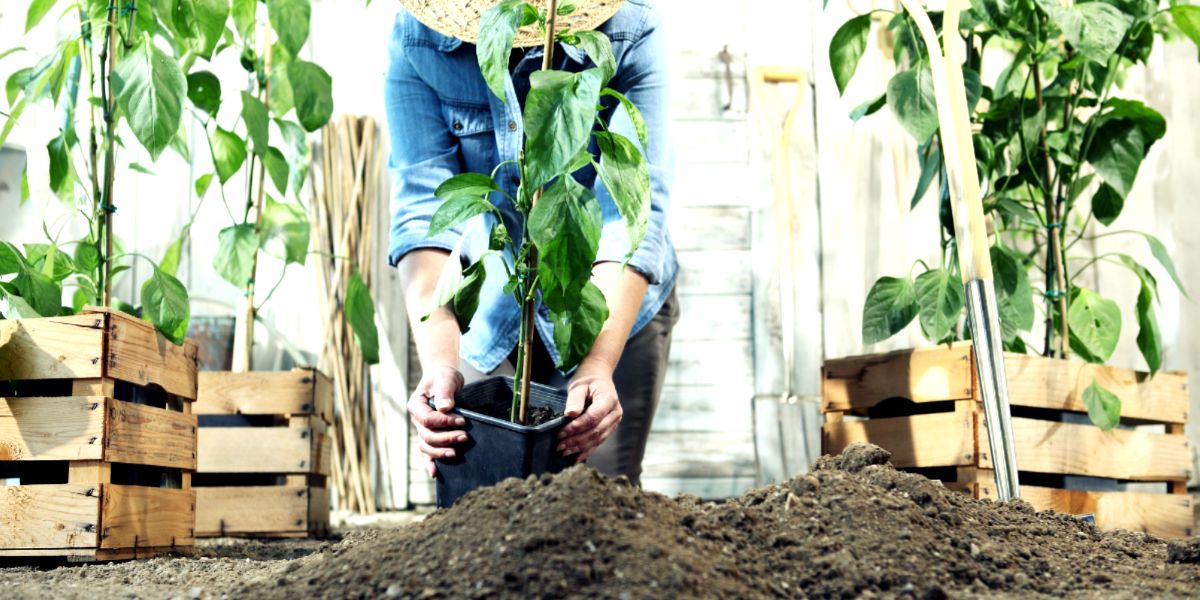The Importance of Crop Rotation in Chili Pepper Gardening

Chili pepper gardening has become increasingly popular among gardening enthusiasts, as these fiery fruits not only add a burst of flavor to your favorite dishes but also provide an exciting challenge for growers.
By understanding the importance of crop rotation in chili pepper gardening, you can ensure a healthy, bountiful harvest while protecting your plants from pests and diseases. In this comprehensive guide, we will explore the crucial role that crop rotation plays in maintaining a successful and sustainable chili pepper garden.
Are you a chili pepper lover who wants to learn how to grow chili pepper plants at home? Look no further! Click below to find out which must-have books will guide you through the process of growing your own chili peppers...
Implementing proper crop rotation techniques is essential for promoting soil fertility, reducing the risk of pest infestations and diseases, and maintaining biodiversity in your garden.
As you delve into this article, you'll discover valuable tips and strategies for effective crop rotation, as well as insights into the benefits of this time-tested agricultural practice.
Whether you're a seasoned chili pepper grower or just starting, this guide will equip you with the knowledge necessary to maximize the health and productivity of your chili pepper garden.
Table of Contents
What is Crop Rotation?
Crop rotation is the practice of growing different types of crops in the same area over a series of seasons. This method helps prevent the buildup of pests and diseases, improves soil fertility, and encourages biodiversity in the garden. Crop rotation is a fundamental principle of sustainable chili pepper gardening.
Benefits of Crop Rotation in Chili Pepper Gardening
1. Prevents Pest and Disease Buildup
Pests and diseases often target specific plant families. By rotating crops, you can break the life cycles of pests and diseases, preventing them from becoming established in your garden. This can be particularly beneficial for chili pepper plants, which can suffer from various pest and disease issues.
2. Improves Soil Fertility
Different crops have varying nutrient requirements, and some plants can even fix nitrogen in the soil. By rotating crops, you can ensure that the soil's nutrients are not depleted, providing your chili plants with the optimal nutrition they need for healthy growth and fruit production.
3. Encourages Biodiversity
Crop rotation promotes biodiversity in the garden, attracting beneficial insects and microbes that can help maintain a healthy ecosystem. This can be particularly important in chili pepper gardening, where beneficial insects and microbes play essential roles in supporting plant health and productivity.
4. Reduces the Need for Chemicals
By preventing pest and disease buildup and maintaining soil fertility, crop rotation can reduce the need for chemical fertilizers and pesticides. This aligns with the principles of organic gardening and can help you grow healthy, chemical-free chili peppers.
How to Implement Crop Rotation in Your Chili Pepper Garden
1. Know Your Plant Families
To effectively rotate crops, you must be aware of the different plant families. Chili peppers belong to the Solanaceae family, which also includes tomatoes, potatoes, and eggplants. It's essential to avoid planting crops from the same family in the same location year after year.
2. Plan Your Garden Layout
Before planting, create a garden plan that considers crop rotation. Rotate crops by family, and try to follow a four-year rotation plan, if possible. For example, plant chili peppers in a different location each year for four years, then return to the original spot in the fifth year.
3. Consider Companion Planting
Companion planting can be an excellent way to introduce crop rotation in your garden. By planting companion plants alongside chili peppers, you can improve soil fertility, attract beneficial insects, and discourage pests. This practice can also create a more diverse and resilient garden ecosystem.
4. Use Cover Crops
Incorporating cover crops into your crop rotation plan can help improve soil fertility and structure. When cover crops are turned into the soil, they add organic matter and nutrients, providing a better environment for your chili plants. Some cover crops, like legumes, can even fix nitrogen in the soil, making it available for future crops.
5. Keep Records
Maintaining accurate records of your garden layout, plantings, and harvests can help you plan and implement effective crop rotation. Use a notebook or a digital tool to track your garden's progress over the years, ensuring that you rotate crops properly and minimize the risk of pest and disease issues.
6. Be Flexible
Sometimes, your garden conditions or the availability of certain plants may require you to adjust your crop rotation plan. Be prepared to make changes as needed, but always prioritize the principles of crop rotation to promote a healthy and productive garden.
Conclusion
Crop rotation is a crucial practice for maintaining a successful and sustainable chili pepper garden. By rotating crops, you can prevent the buildup of pests and diseases, improve soil fertility, and promote biodiversity. Follow the tips and techniques outlined in this guide to implement crop rotation in your chili pepper garden and enjoy a bountiful harvest for years to come.
For more information and resources on chili pepper gardening, check out our other articles, such as:
- Growing Chili Peppers Vertically
- Tips for Growing Chili Peppers in Cold Climates
- How to Grow Chili Peppers from Cuttings
- Chili Pepper Companion Planting Benefits and Considerations
- Preparing Your Garden Soil for Optimal Chili Pepper Growth
With a wealth of knowledge at your fingertips, you're well on your way to mastering the art of chili pepper gardening.



